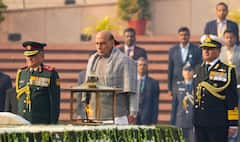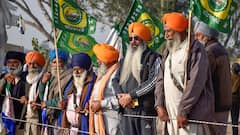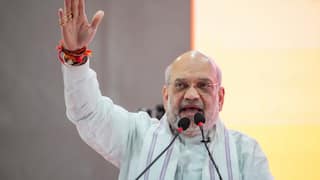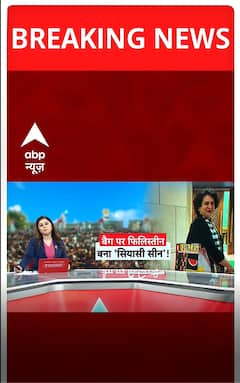Ahead Of Diwali, Delhi's Air Quality Slips Into 'Very Poor' Category As AQI Reaches 302
According to the SAFAR, the share of crop residue burning emissions in the major pollutants such as PM 2.5 stands at about 8%.

New Delhi: Ahead of Diwali celebrations, Delhi's overall air quality on Monday slipped into the "very poor" category. The overall Air Quality Index (AQI) was at 302, said the Centre-run System of Air Quality and Weather Forecasting And Research (SAFAR). According to the SAFAR, the share of crop residue burning emissions in the major pollutants such as PM 2.5 stands at about 8%.
The agency further predicted that the air quality in the national capital may improve to the upper end of the poor due to expected change in the direction of the wind, ANI reported.
However, on Sunday, the India Meteorological Department (IMD) predicted that the air quality in Delhi will likely remain in the lower end of the very poor category on November 1, and 2, 2021. "The air quality is likely to remain in the lower end of Very Poor category till November 4 and then deteriorate on November 5-6 significantly. PM2.5 to be a predominant pollutant," IMD was quoted by ANI in its report.
In view of a looming threat of the covid-19 pandemic, the Delhi Pollution Control Committee (DPCC) had directed a complete ban on the sale and bursting of all types of firecrackers in the national capital till January 1, 2022.
"Several experts have indicated a possibility of another surge of COVID-19 and largescale celebrations by bursting of firecrackers will result not only in agglomeration of people in violation of social distancing norms but also a high level of air pollution leading to serious health issues in Delhi," the order read.
Earlier in wake of the air pollution in the national capital, Delhi Chief Minister Arvind Kejriwal had blamed neighbouring states for not helping farmers because of which they burn their stubble thus causing pollution in Delhi.
“For the past one month, I have been tweeting data of air quality in Delhi. Pollution has increased in the last 3-4 days and it is due to stubble burning in neighbouring states. Farmers in neighbouring states are compelled to burn stubble as their governments are doing nothing for them (towards stopping stubble burning)," Kejriwal was quoted by PTI in its October report.
Guidelines regarding the use of firecrackers issued by neighbouring states:
Haryana: The Haryana Government had directed two-hour relaxation to sell and burst firecrackers in the state. "Corona cases are rising along with pollution, so we have to take tough decisions regarding crackers. Yet, we are giving relaxation of 2 hours for those who want to sell crackers & burst them. Traders can sell crackers during these 2 hours," ANI quoted Haryana Chief Minister Manohar Lal Khattar who said in line with the risk of spread of Covid-19 due to pollution created by bursting of crackers.
Punjab: The Punjab government had banned the use of firecrackers during upcoming festivals like Diwali and Gurpurab to prevent pollution. A directive issued by the Punjab government said that only green firecrackers will be allowed on Diwali and Gurpurab. According to guidelines issued by the government, the bursting of green crackers will be allowed only for 2 hours, that is, from 8 pm to 10 pm on Diwali and Gurpurab. The government has said that the bursting of firecrackers is not allowed in Mandi Gobindgarh and Jalandhar.
(With inputs from Agencies)
Trending News
Top Headlines






































